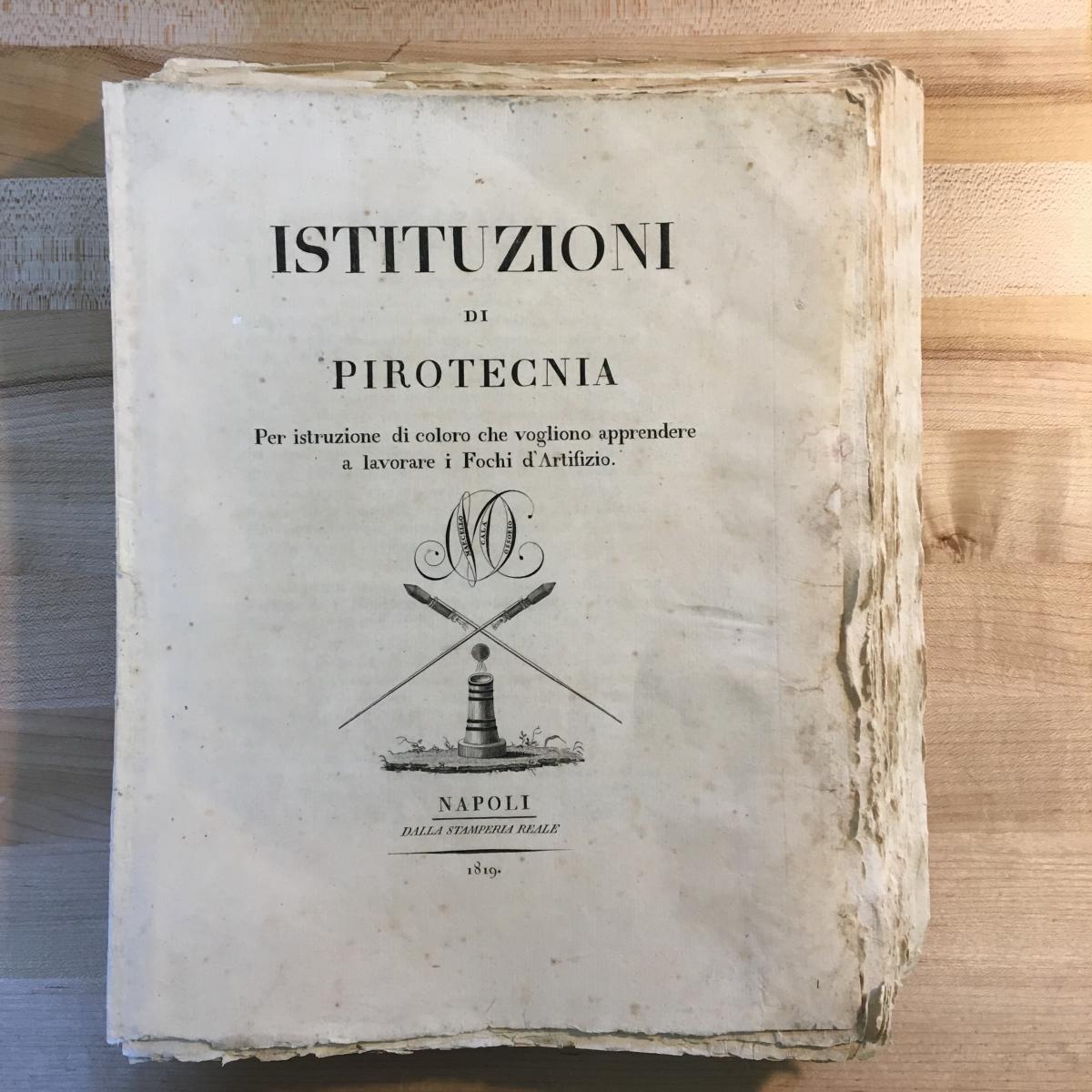The image of the volume below, part of the Lammot du Pont, Jr. Collection of Aeronautics currently being treated for water and mold damage, had been re-bound in a library binding, a solid color cloth hardcover, titled on the spine and plain paper endsheets inside. Library bindings were introduced in 1923 as a preservation method for heavily used books and are standard in most libraries – think bound periodicals.
Protect they do, but at the loss of the original binding. Once I turned past the endsheets, a lovely treasure was revealed. The title page, replete with vignette and author’s cipher, declares “Istituzioni di Pirotecnia” from the Royal Printing House in Naples, 1819.

Not what I was expecting inside this dull, industrial binding. The text was printed on good quality laid paper with only slight staining from mold along the untrimmed edges. Most of the damage must have been to the endsheets and cover, leading to their removal.
I was curious how this volume would have been bound so I searched online to see if it popped up in other collections. Of the three copies where I found pictures, two were bound in half calf with decorative paper covers, gilt title and ornaments on the spine and the third was bound in full vellum, the spine gold tooled and labeled. Both styles are contemporary to the date of publishing, but I had doubts that our volume was bound in either fashion.
Remember those untrimmed edges? Part of the fine binding process is trimming or “ploughing” the edges of the sewn text block. Our copy retains the natural deckle from the hand papermaking process leading me to believe that this volume had remained in its “temporary” binding. Simple paper covers were applied by publishers and booksellers as temporary protective covers for unbound books. Once purchased, the owner could take the text to a bookbinder for a bespoke binding, although this was not always the case. Some sellers offered their titles bound fine at varying price points – the higher the price, the finer the binding.
Simple paper covers were particularly common in Italy from the 17th to early 19th centuries, and are known as Italian limp-paper or laced-paper covers. Our copy of Istituzioni di Pirotecnia was published in 1819, falling within this time frame.
A limp paper cover is constructed for the book from a single piece of heavy paper, which is folded and creased to fit the text block. The text is sewn onto cords or thongs which are then laced through the cover. The text block is not shaped, the edges remain untrimmed, and no adhesive is used. Our copy has five sewing stations in the folds, supporting this simpler method of sewing: two holes for the kettle stitches and three for the sewing supports. It was common at the time for books bound fine to be sewn onto five supports, with a kettle stitch at the head and tail producing seven sewing stations.
Based on this evidence, my research leads me to believe that Istituzioni di Pirotecnia had been in a laced paper cover before being re-bound in a library binding. Though these simple paper covers were meant to be temporary, they have proven to provide adequate protection to the text block and have come back into favor with conservators because of their non-invasive nature: no adhesive and no rounding and backing of the spine.
Sharon Fickeissen is the Library Conservation Technician at Hagley Museum and Library.
